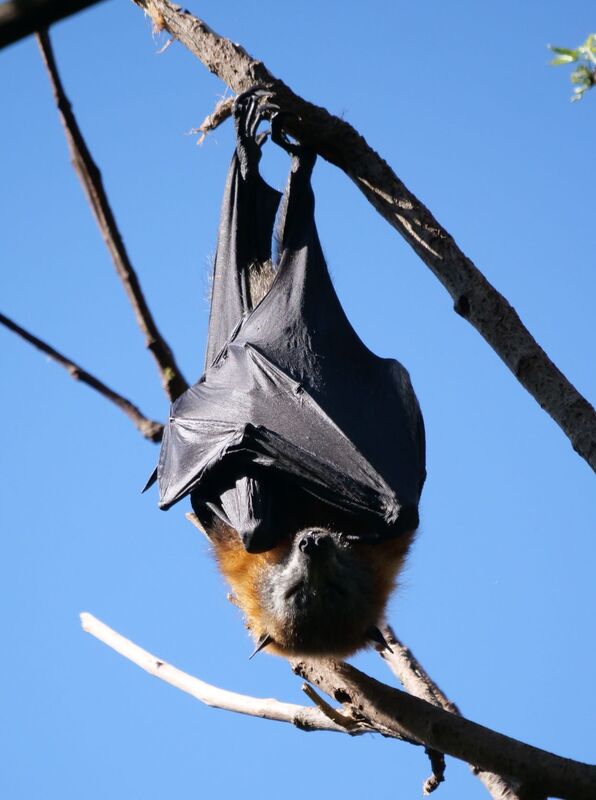Fruit Bats (aka Flying Foxes)
Fruit Bats (aka Flying Foxes) often get a bad name for being noisy, smelly and doing damage to our gardens. Locally we have Grey-headed and Little Red varieties and they have camps in the melaleucas near the Singing Bridge and on Witt Island, though they do move on to other locations during the year. The camps will usually be smellier during mating season and after rain when the males vigorously re-scent their territory.
Flying foxes are the main long-distance pollinators of plants and trees and help in the regeneration of native hardwood forests. A single bat can scatter up to 60,000 seeds in a night flight. When unable to obtain nectar, pollen or native fruits, pregnant and lactating females in particular may raid commercial or backyard fruit trees, making enemies by munching on fruit crops and orchards in their search for dinner. It is important that any netting we use in our gardens has small mesh so that the bats do not get caught in it.
In captivity, flying foxes can live for 20 years but their life span in the wild is unknown as they are threatened by many things such as habitat destruction, increasing conflict with people and extreme weather events such as drought, fire and flood. Ravens, snakes, powerful owls, birds of prey, possums, goannas and cats kill and eat them.
Flying foxes are known to carry Hendra virus which can be passed onto horses and then onto people who have been in close contact with an infected horse. There are no cases of the disease being transferred directly to humans. Also, less than one per cent of all Australian bats are known to carry Australian bat lyssavirus (a rabies type virus), for which a vaccine is available.
If you encounter a trapped or injured bat, it is best not to handle it and to contact Wildlife Rescue 1300 946 295
Ann Woods
Myall Koala and Environment Group
July 2023
Flying foxes are the main long-distance pollinators of plants and trees and help in the regeneration of native hardwood forests. A single bat can scatter up to 60,000 seeds in a night flight. When unable to obtain nectar, pollen or native fruits, pregnant and lactating females in particular may raid commercial or backyard fruit trees, making enemies by munching on fruit crops and orchards in their search for dinner. It is important that any netting we use in our gardens has small mesh so that the bats do not get caught in it.
In captivity, flying foxes can live for 20 years but their life span in the wild is unknown as they are threatened by many things such as habitat destruction, increasing conflict with people and extreme weather events such as drought, fire and flood. Ravens, snakes, powerful owls, birds of prey, possums, goannas and cats kill and eat them.
Flying foxes are known to carry Hendra virus which can be passed onto horses and then onto people who have been in close contact with an infected horse. There are no cases of the disease being transferred directly to humans. Also, less than one per cent of all Australian bats are known to carry Australian bat lyssavirus (a rabies type virus), for which a vaccine is available.
If you encounter a trapped or injured bat, it is best not to handle it and to contact Wildlife Rescue 1300 946 295
Ann Woods
Myall Koala and Environment Group
July 2023




